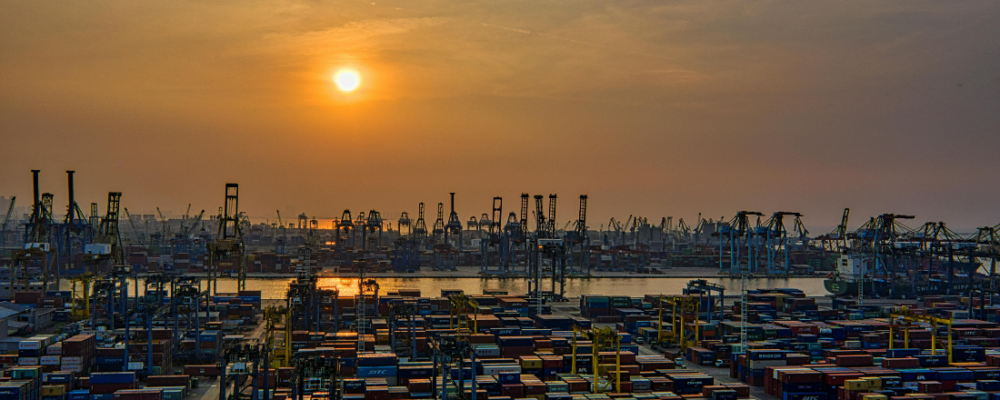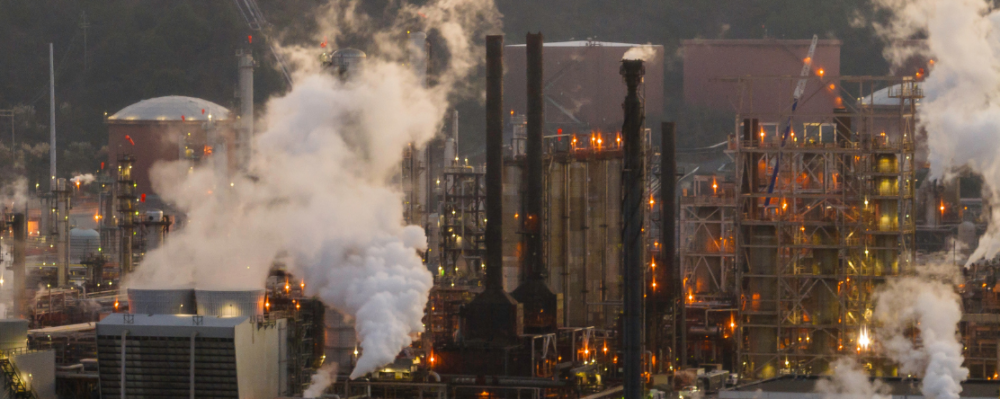
Report: Freight Automation: Dangers, Threats, and Opportunities for Health and Equity
-
Focus Areas
Environmental Health, Healthy Communities -
Issues
Asthma, Climate Change -
Expertise
Public Policy Advocacy -
Programs
Regional Asthma Management and Prevention Program

The freight transportation system in the United States is a fundamental part of our economy, infrastructure and environment, but many freight system frontline workers labor in arduous conditions yet receive low wages and limited benefits.
Freight Automation: Dangers, Threats, and Opportunities for Health and Equity explores how automation in the freight transportation system affects the health of workers, communities, and the environment—and also how these effects will be inequitably felt by people with low incomes and communities of color. Created PHI’s Regional Asthma Management and Prevention, Moving Forward Network, Human Impact Partners and community partners, the report also provides recommendations for policies and programs that promote health and equity for frontline workers and fence-line communities.
Freight Automation: It’s here and growing.
Although people are still key to making the freight system move, technological change is coming. In some corners of the freight system, it’s already here. Various forms of freight automation, where some or all human labor is replaced by machines, are already operational or in different stages of development and testing. In addition to technological advances, the future of freight automation will be determined by negotiations and disputes between workers and employers. This report looks at sector-by-sector snapshots of what freight automation looks like now and how it may look over the next 5 to 15 years, including in Trucking, Warehouses, Rail and Ports.
Through extensive literature review and in-depth interviews with key stakeholders, this report details the anticipated effects of freight automation related to various social determinants of health, including employment, air quality, traffic safety, and noise and vibrations.

Every industry is being impacted [by automation], which presents a lot of danger to our industry because when people get hurt on our job they don’t get paper cuts, they don’t get headaches. When people get hurt on the docks they lose limbs or they lose lives.Vivian Malauulu
ILWU Local 13 Registered Longshore Worker and Benefits Officer
I look at automation as a short-term fix for the financial health of the country. Automation eliminates jobs which eliminates the ability for people to buy goods and services.Buddy Smith
President, Local 1233, International Longshoremen’s Association

Health and safety is an issue. Because the pace is increasing [with automation], are we going to see more accidents and injuries or even heart attacks? We’ve had a couple members at Amazon have strokes.Roberto Clack
Associate Director, Warehouse Workers for Justice
Bracing for Impact: Increased freight automation will have significant and largely negative health and equity effects on frontline workers and fence-line communities.
Where there’s freight, there are also people living and working close by—typically people with low incomes and people of color—who suffer disproportionately from the health impacts of air pollution and other risks created by the freight system. Increased freight automation will have significant, and largely negative, health and equity impacts on frontline workers and fence-line communities. Addressing these impacts is essential.
The pace and extent of freight automation offers a critical window of opportunity for policymakers, industry stakeholders, frontline workers, fence-line community members, and the public.
Freight automation is at an inflection point. We have the opportunity to deploy technology to create healthier, more equitable workplaces and communities. But policymakers need to make the right choices.
“There is a critical window of opportunity. Policymakers, industry stakeholders, frontline workers, fence-line community members, and the public can make decisions—through policies and programs—that promote health and equity.”
Policy Recommendations: Putting health & equity into freight automation
Policies and programs should help mitigate current harms created by a system that relies heavily on low-wage workers and creates pollution, noise, and safety problems for nearby communities; new harms need to be prevented as well.
It is particular critical for policymakers to give full attention to the needs of the people and communities of color who are most affected by freight automation, either as frontline workers or as residents in fence-line communities.
Engage frontline workers and fence-line communities in
automation decisions.
- Decision makers at all levels of government should ensure that automation-related policy and program decisions reflect the input and perspectives of frontline workers and fence-line communities.
- Leaders in businesses considering automation should also engage workers in thinking through automation-related decisions and impacts.
Support frontline workers.
- Plan for automation that advances frontline workers, not just technology.
- Strengthen workers’ rights to organize for fair wages, benefits, and a say in automation-related decisions.
- Enforce and improve safety standards for workplace conditions to prevent the negative affects of automation on worker safety and health.
- Reinvigorate and expand programs to meet the needs of frontline workers displaced by automation.
- Correct worker-status misclassification of truck drivers and other freight workers to promote livable wages and benefits.
- Implement broader policies and programs that address automation’s impact across the entire U.S. economy.
Support frontline workers and fence-line communities.
- Require automation impact reports to better understand and mitigate automation’s effects on health and equity.
- Prohibit the use of public funding for any freight automation that may have negative impacts on worker and community health.
- Accelerate efforts to shift freight transportation to a zero-emission system through incentives, regulations, and permitting decisions.
- Implement federal policies to prioritize the safety of freight drivers and other road users.
Support additional research on employment, air quality,
and traffic safety impacts.
These recommendations are geared toward a broad category of policymakers responsible for freight automation, including elected and administrative officials at local, state, and federal levels of government.
Originally published by Regional Asthma Management and Prevention
Work With Us
You change the world. We do the rest. Explore fiscal sponsorship at PHI.
Support Us
Together, we can accelerate our response to public health’s most critical issues.
Find Employment
Begin your career at the Public Health Institute.


